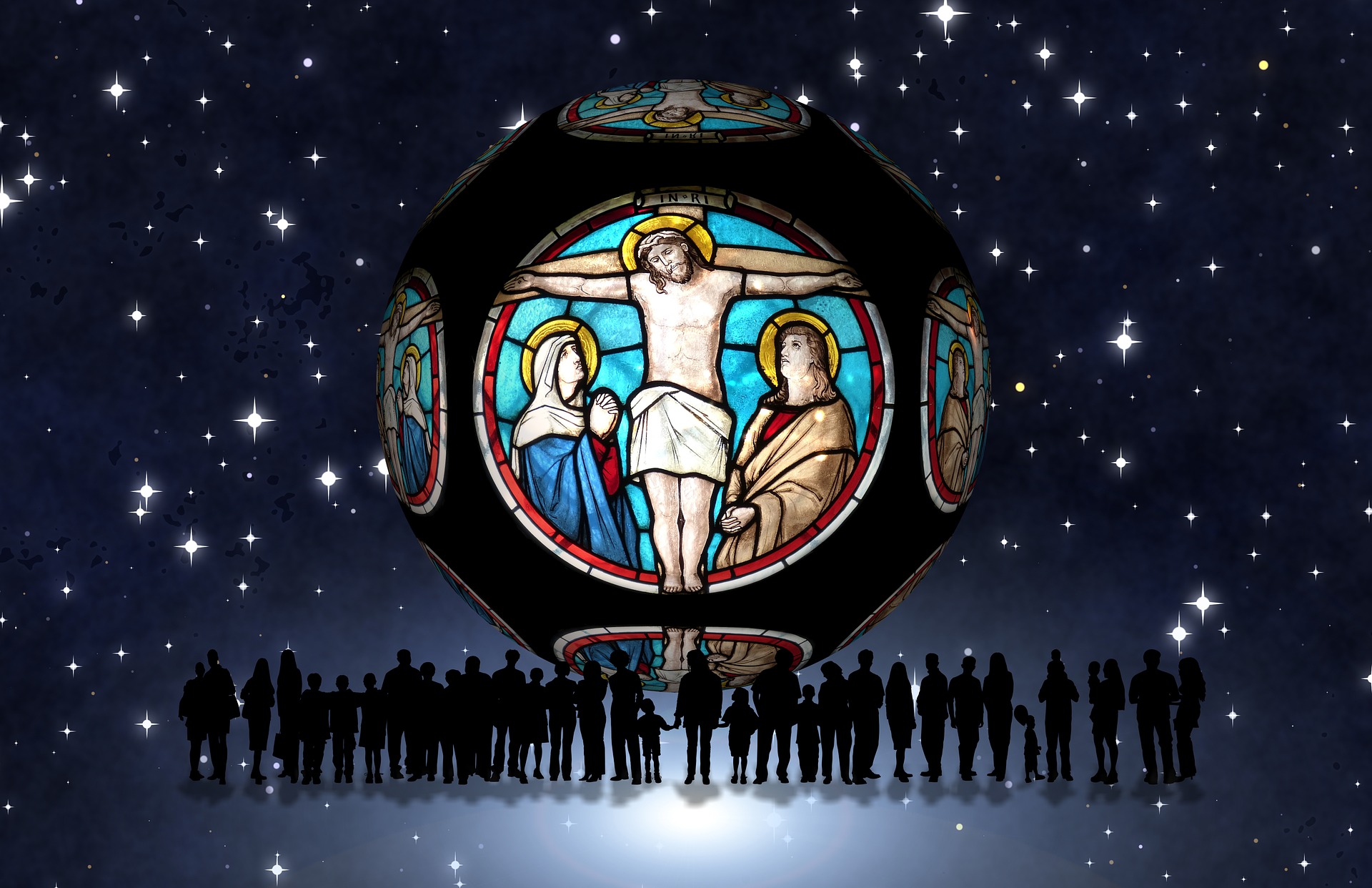Doctrine
Holy Tridum(Holy week)
The word “triduum” comes from the Latin word triduum, which comes from tris(“three”) + dies (“day”).

Basically, the Sacred Triduum is one great festival that reminds us of the passion of our Lord Jesus Christ and his resurrection , when the Lamb of God laid down his life in atonement for our sins.
The single celebration of the Triduum marks the end of the Lenten season, and leads to the Mass of the Resurrection of the Lord at the Easter Vigil.
The liturgical services that take place during the Triduum are:
- Mass of the Lord’s Supper
- Good Friday of the Lord’s Passion
- Mass of the Resurrection of the Lord
Here is a breakdown of each of the three days that make up the Easter Triduum.
HOLY THURSDAY

The evening Mass on Holy Thursday is referred to as The Mass of the Lord’s Supper. This is where the Church re-lives the institution of the Eucharist and the Holy Sacrifice of the Mass at the Last Supper, as well as the institution of the priesthood, which took place the evening before Jesus was crucified.
In the Mass of the Lord’s Supper, during the Gloria in Excelsis Deo, all church bells may be rung and the organ played; afterwards, bells and organ are silenced until the Gloria of the Easter Vigil.
After the homily there is an optional “washing of the feet” ceremony, where the priest washes the feet of others to signify his role as servant—just as Jesus did with his disciples. Extra hosts are consecrated at this Mass to be used on Good Friday when no Mass will be celebrated.
The Mass of the Lord’s Supper on Holy Thursday concludes with a procession of the Blessed Sacrament to the “altar of repose,” a place where the consecrated Host is kept, away from the main altar where Mass is normally celebrated.
Many parishes will create space for people to stay and pray with the reposed Eucharist at this altar of repose late into the night, remembering Jesus’ request in the Garden of Gethsemane for someone to “watch and pray” with Him.
In the form of the Roman Rite in use before 1955, Mass was celebrated in the morning. Some faithful travelled to several churches to pray at each one’s Altar of Repose, a practice called Seven Churches Visitation, which now is associated rather with the morning of Good Friday.
Good Friday

On this day, Christians ritually recall the Passion and crucifixion of Jesus. Mass is not celebrated on this day, however, Holy Communion (reserved in the tabernacle on the altar of repose from the previous evening) is distributed at the Celebration of the Lord’s Passion. The celebration traditionally occurs at 3 pm and consists of three parts: liturgy of the Word, veneration of the cross, and Holy Communion.
The first part, the Liturgy of the Word, consists of the reading or chanting of Isaiah 52:13-53:12, Hebrews 4:14-16, 5:7-9, and the Passion account from the Gospel of John. The second part of the Good Friday liturgy is the Veneration of the Cross: a cross is solemnly displayed to the congregation and then venerated by them(kneeling and kisses the cross) , individually if possible. The third and last part is Holy Communion. The Eucharist, consecrated at the Mass of Holy Thursday is distributed at this service. At the conclusion, the priest and people depart in silence, and the altar cloth is removed, leaving the altar bare.
Holy Saturday

Also called Black Saturday, is a vigil service that is held after nightfall on Holy Saturday, or before dawn on Easter Sunday, in commemoration Jesus’ death and harrowing of Hell. Many of the details that follow hold for Anglican and Evangelical Lutheran churches as well as Catholic worship. The ceremony of darkness and light is held at the beginning of the Easter Vigil Mass. The paschal candle, whose lighting symbolizes the resurrection of Christ from the dead, is lit from the new Easter fire. The solemn procession to the altar with the Paschal candle is formed. Once everyone has processed in, the Exsultet is intoned.
After the Exsultet, everyone is seated and listens to seven readings from the Old Testament and seven Psalms. At least three of these readings and associated psalms must be read, which must include the account of the first Passover from the Book of Exodus. Pastoral conditions are taken into account when deciding on the number of readings. These readings account salvation history, beginning with Creation.
In Catholic practice, during the Gloria at the Mass, the organ and church bells are used in the liturgy for the first time in two days.If the lights of the Church have been previously left off, they are turned on as the Gloria begins. The Paschal candle is used to bless the baptismal font to be used in the celebration of the sacrament. The Great Alleluia is sung before the Gospel is read, Alleluia being used for the first time since before Lent. People receiving full initiation in the Church, who have completed their training, are given the Sacraments of Christian initiation (Baptism, confirmation, and the Holy Eucharist). In Catholic and Anglican tradition, the Easter Vigil is an especially appropriate day for Holy Baptism.
Easter Sunday
Easter Sunday marks the end of the Triduum and the beginning of the seven-week Easter season that will end with Pentecost Sunday. Easter Sunday church services for Catholics as well as Protestants is a joyous celebration of resurrection and rebirth of Jesus and mankind. Popular Easter symbolism includes many images of rebirth as found in the world of nature and from religious traditions through history, including fragrant lilies, newborn animals, and spring plant growth.
During the 50-day Easter period, vestments are generally white or gold, but red when celebrating apostles and martyrs and on the solemnity of Pentecost. In the pre-1970 Roman Catholic calendar, with its 56-day Eastertide, red was used during the octave of Pentecost.
About Author




























